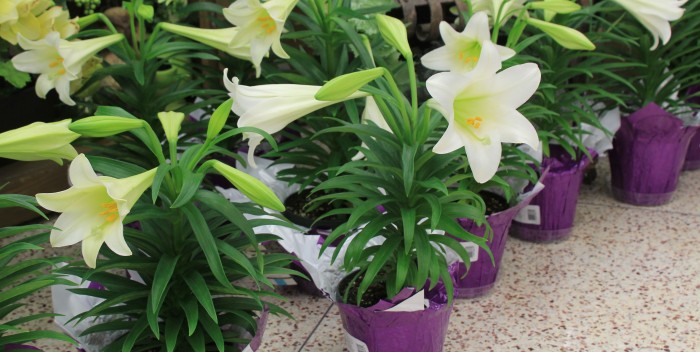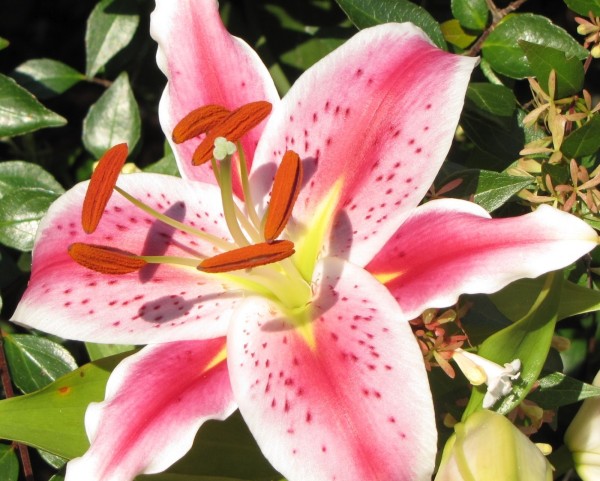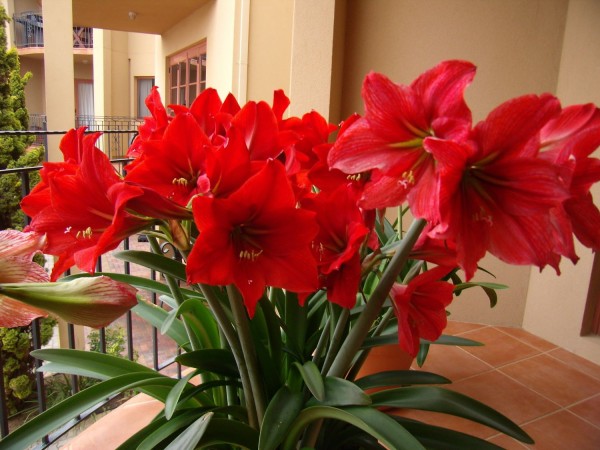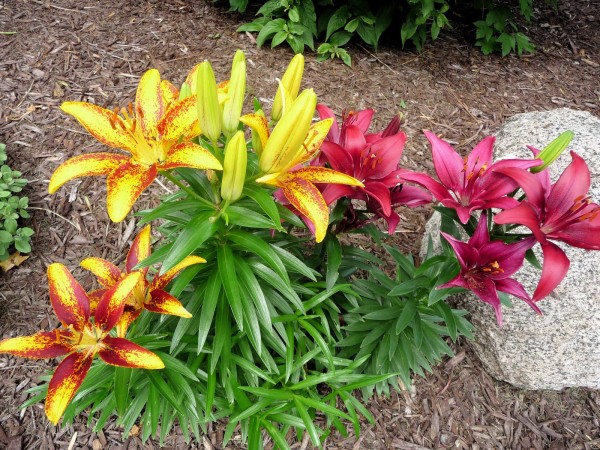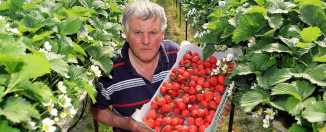Home lilies: planting and care
It is not at all necessary to have a summer cottage or live in the countryside to grow beautiful lilies on your own. Many varieties of this wonderful plant are very compact in size. Therefore, let's figure out how to grow lilies at home.
Content
Planting lilies
Compact varieties of lilies are suitable for home cultivation. These include Asian and Oriental hybrids, as well as king lilies and dwarf lilies. For successful breeding of lilies, select planting material in the fall. Pay attention to the appearance of the bulbs. Good bulbs are always smooth and dense, with no brown scales on them. If you still find brown spots on the purchased bulbs, then prepare a 0.3% karbofos solution and put the bulbs in it for half an hour.
- For planting, pick up pot with a diameter of at least 15 centimeters.
- Lay high-quality drainage at the bottom, as lilies do not like stagnant water. Expanded clay or broken brick or any other stones are suitable as drainage.
- Then fill in about 5 centimeters of soil from soil and sand in equal amounts.
- Make a small hole in the soil to hold the lily bulb.
- Then deepen the bulb into the soil and spread its roots. Top up the earth and tamp it a little. Dig in the onion halfway up.
- Place the pot with the bulb on a windowsill so that the plant gets enough light.
- Water the lily sparingly to keep the soil moist.
How to care for lilies
Before the lily begins to bloom, it must be sprayed with water with growth stimulants diluted in it twice a month. This will speed up the process of bud formation and the onset of flowering time. Be sure to loosen the top 4-6 centimeters of the soil regularly to allow air for the roots.
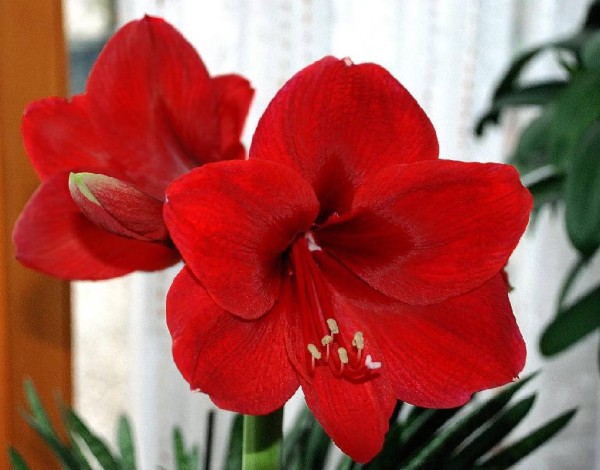 When the lily stretches to a height of 9-12 centimeters, it can be taken out onto the balcony or outside. In this case, first take out the lily for only half an hour, then gradually increase the time. However, do not leave the flower outside overnight. To speed up plant development it can be sprayed with water daily. At the same time, try not to get water on the buds and opened flowers, so as not to reduce their life.
When the lily stretches to a height of 9-12 centimeters, it can be taken out onto the balcony or outside. In this case, first take out the lily for only half an hour, then gradually increase the time. However, do not leave the flower outside overnight. To speed up plant development it can be sprayed with water daily. At the same time, try not to get water on the buds and opened flowers, so as not to reduce their life.
Lilies need constantly moist soil. Therefore, make sure that the lump of earth in the pot does not dry out. Use for glaze exceptionally soft water. It can be melt water, rainwater, boiled or settled water. Water once every three or four days.
After the flowering period, the lily will gradually begin to move into a dormant state. Therefore, you need to reduce watering to once every six or eight days. Stop spraying altogether. When the leaves and stems are completely dry, scoop up the bulbs and place them in a plastic bag with some damp sawdust and moss. The bag can be placed in the refrigerator.
Reproduction of lilies
The easiest way to propagate lilies at home is from bulbs. You can also grow them from seeds. In this case, the seeds are planted in boxes in March. Space the seeds one to one and a half centimeters apart. Sprinkle sand on top of the seeds and cover the box with plastic wrap. Place the box in the shade and water sparingly. The temperature should be medium. When shoots appear, remove the film. Continue to water the seedlings as usual. To accelerate the development of seedlings, you can spray the plant with growth activators diluted in water.
Feeding lilies
Fertilization is very useful for lilies. This can be done in the spring. Most often, fertilizing with nitrogen content is used for this purpose. For example, you can use ammonium nitrate or nitroammophos. You can also use complex fertilizers in liquid form - superphosphate, liquid potassium dressing.
In summer, use wood ash several times a season, mullein infusion. For the autumn period, nitrogen-free mineral fertilizer is perfect. Do not use organic fertilizers for lilies. They do not benefit the plant at all, moreover, they cause a fungal infection in it.
When to transplant lilies
In a year, the soil in the pot is completely depleted. The plant draws out all useful substances from it during the summer period, and it becomes empty. Therefore, once a year, the lily must be replanted, while completely replacing the soil. To do this, carefully scoop the lily out of the pot to avoid damaging the bulbs.
Separate them from each other, clean from the ground and rinse. It is recommended to soak the bulbs in a weak solution of potassium permanganate before storing. The smallest bulbs can be immediately planted in the germination boxes. Fold the large ones in bags and put them in the refrigerator for storage.
